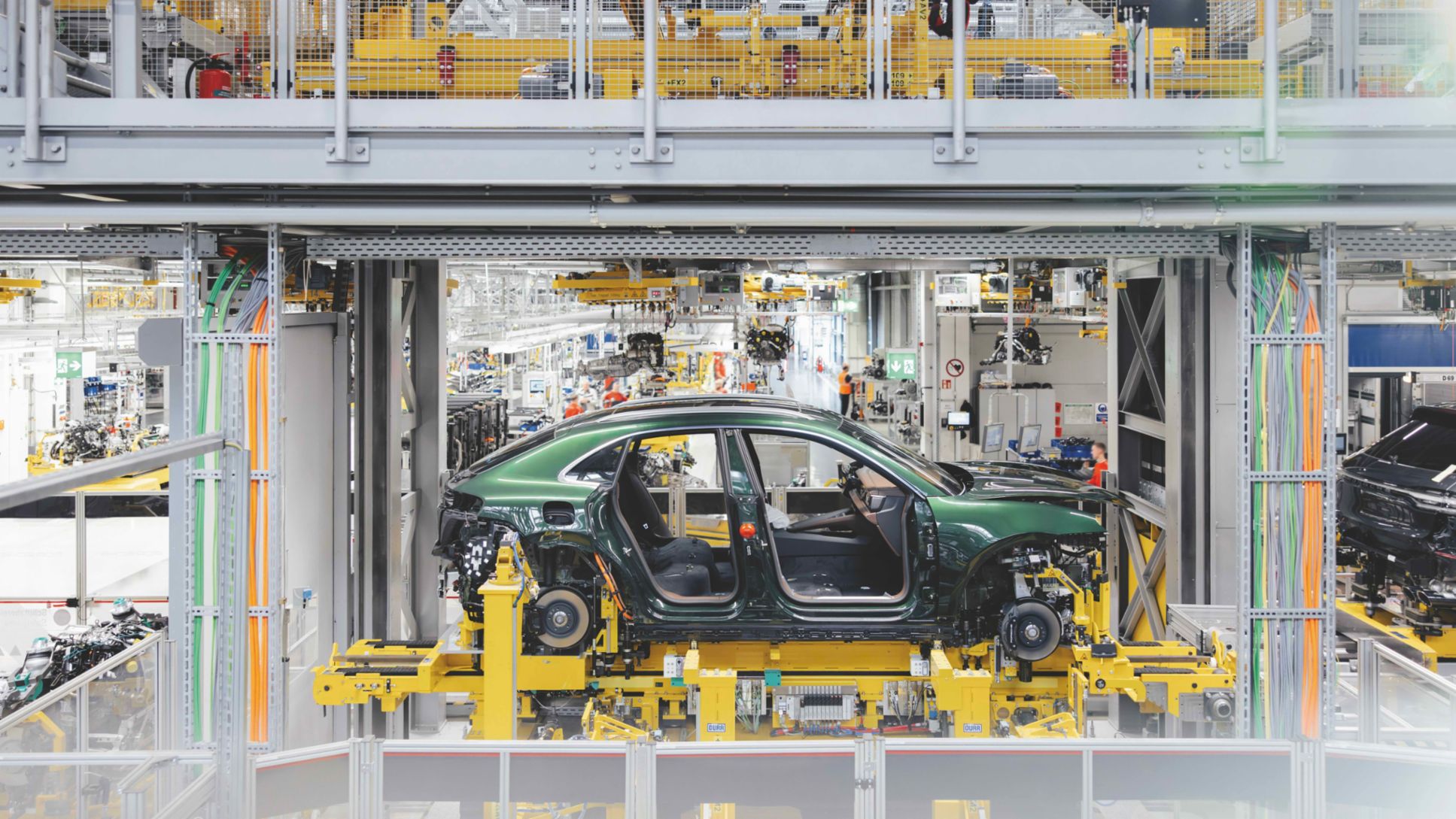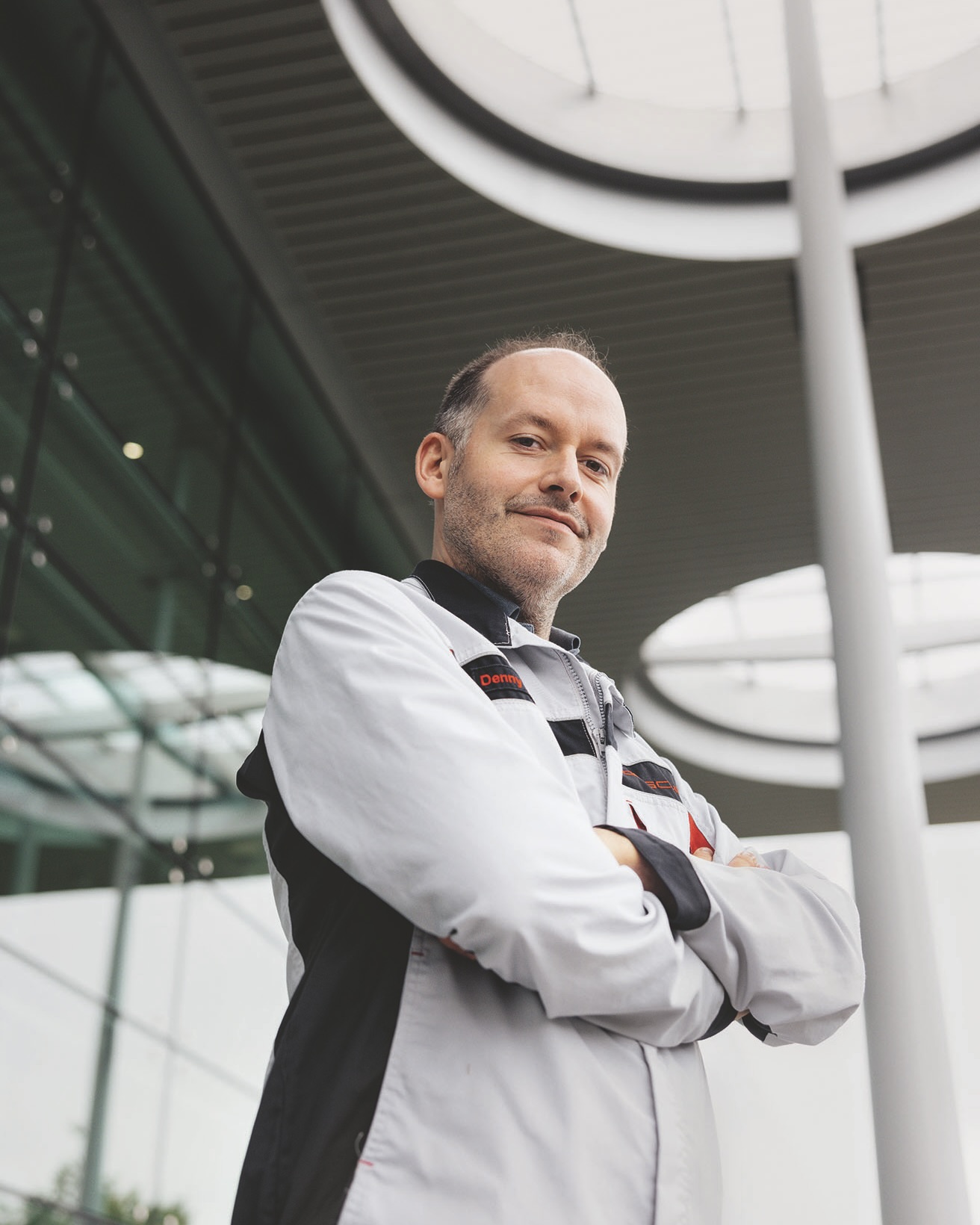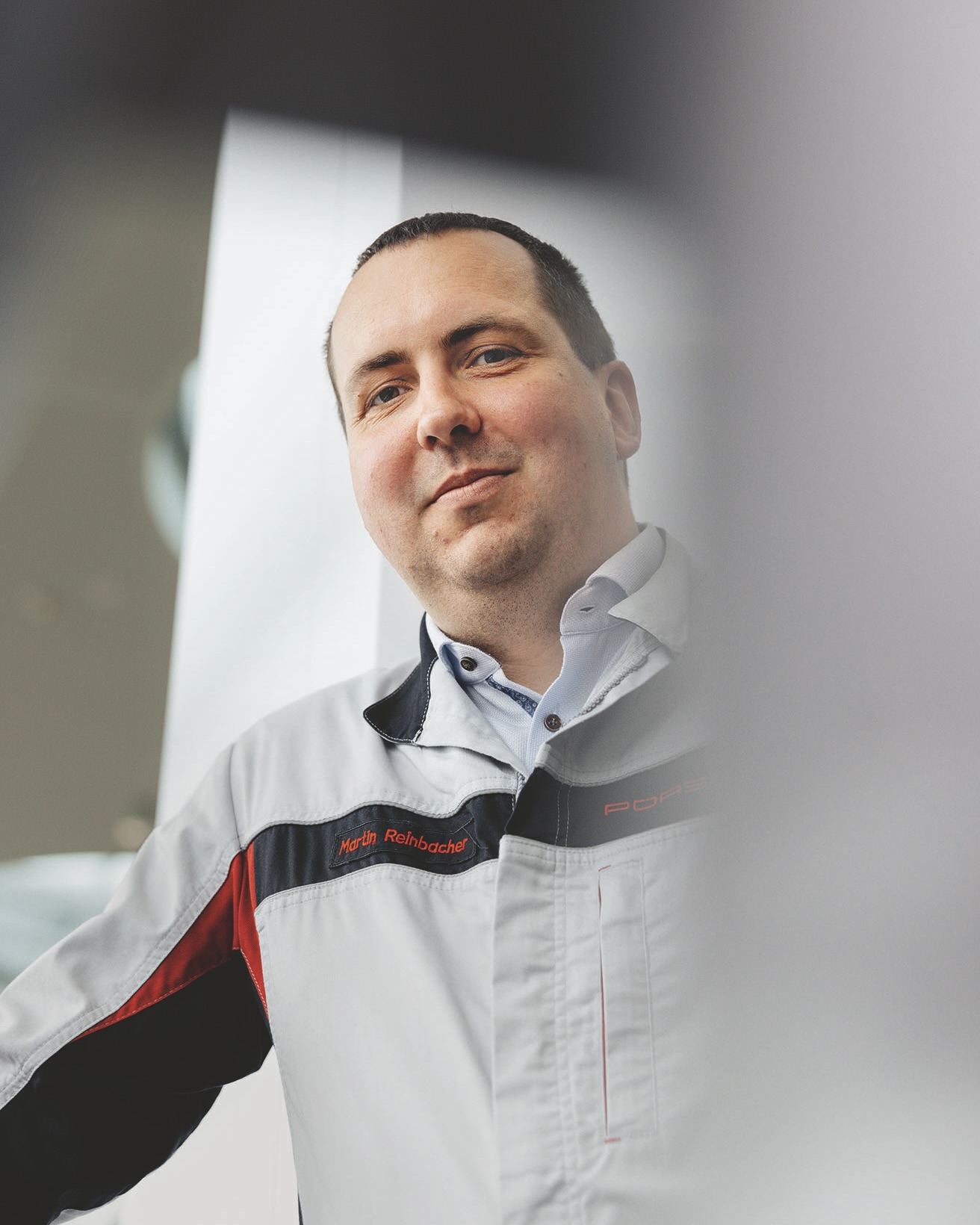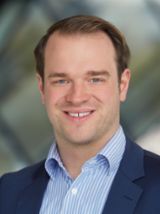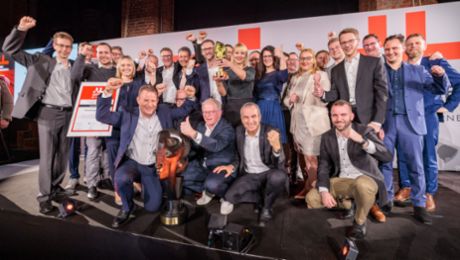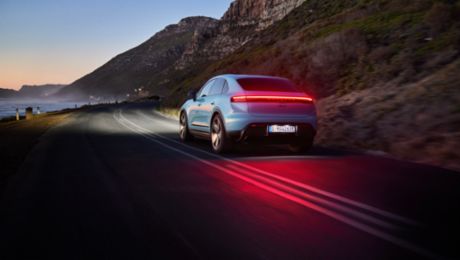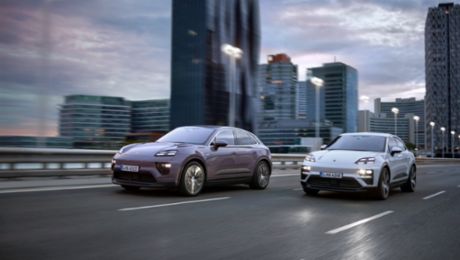A marriage is performed, but no waltz is played. Rather, there are whooshing, buzzing, and banging sounds: the background music for modern automobile production at the Porsche Plant Leipzig. The body of a Porsche Macan painted in Oak Green Metallic is slowly lowered on a hanger. Its betrothed, the chassis with an all-electric powertrain, has just been brought in by a driverless transport system. As if in slow motion, the two components are fully automatically joined and screwed together before the interior is installed.
This is what’s called the marriage. Wherever vehicles are manufactured, this is the centerpiece of production. So far, so good. But the marriage at the Porsche Plant Leipzig is special. Unusually complex, multifaceted, and efficient. Three different drive concepts are manufactured on a single production line: gasoline-driven, hybrid, and electric vehicles. Some 600 Macan and Panamera cars are produced in top quality in this way every day, for customers around the world.
A factory that operates like clockwork
The master of ceremonies for these marriages is Sebastian Böttcher. The certified engineer is an equipment planner and developed the system together with a dozen of his Porsche coworkers. Dresden-born Böttcher, 40, wears a fitting analogy for his work on his wrist: a fancy watch he treated himself to for his 30th birthday. “Look,” he says, pointing at the watch case back made from special glass, behind which the delicate spring mechanism can be seen. “Our plant is like clockwork, just on a different scale.”
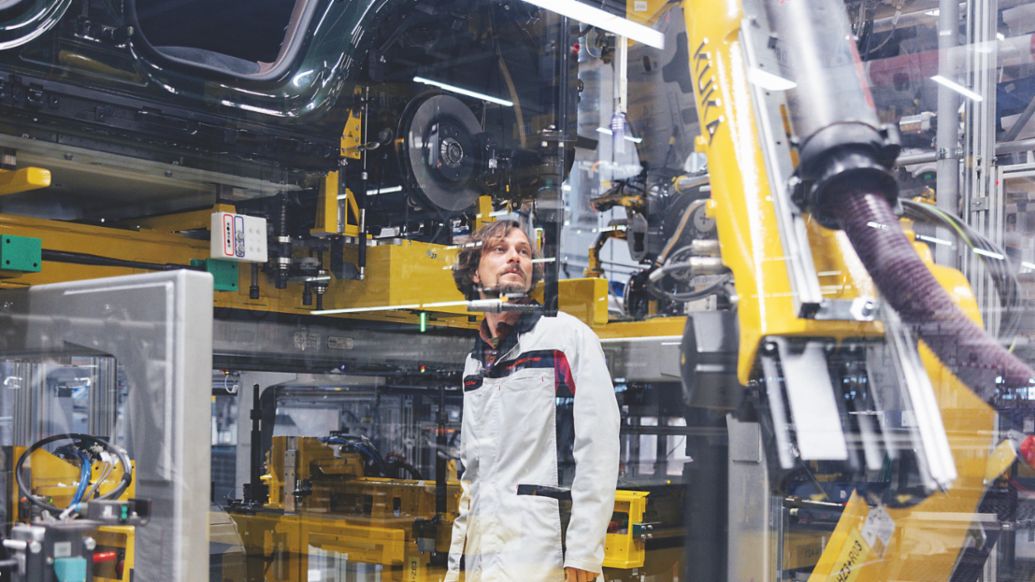
The foundations for this clockwork being completely overhauled were laid in 2018 when the Executive Board decided to produce the all-electric Macan.
It was decided that the model would be created in Leipzig, on the existing production line that until then had been reserved for vehicles with a combustion engine or a hybrid drive. Realizing a whole new line wouldn’t have been possible based on the existing parameters. “We soon realized we would have to completely revise the existing marriage and many other workflows at the plant,” says Böttcher, thinking back. “An additional type of powertrain is like a little world of its own, with new requirements, special procedures, and special tools. We had a lot of learning to do.”
One especially complex problem: whereas the marriage of a gasoline-driven or hybrid vehicle involves the vehicle’s underbody and chassis being screwed together in 20 places, there are 50 in an all-electric model. While this change may seem unspectacular at first, it involved the major challenge of handling these additional work steps on one and the same assembly line.
Complex and harmonious
To solve this problem, Sebastian Böttcher and his team had to reinvent the marriage. What was previously four assembly stations stretching across 24 meters became nine stations across 60 meters. Six additional robots and 18 automatic screw stations were incorporated.
Elsewhere, too, Porsche intentionally came up with new ideas with the assistance of external partners. For example, it developed an automatic screw loading system that, depending on the product line and fittings, could handle any screw size and shape, torque and angle, at incredibly high speeds. A measuring device was also developed which currently has its patent pending. This regularly passes along the assembly line to check the screw spindles during ongoing production operations. As a result, there are virtually no idle times or delays.
A special camera system was also installed which autonomously examines the surface of the electric vehicles’ high-voltage batteries for foreign objects like mislaid washers or nuts.
“All in all, we have created a highly productive system which has been seamlessly incorporated into all the plant workflows,” says Sebastian Böttcher in summary. “There’s obviously always things that need optimizing, but that’s standard procedure for us at Porsche.”
Pearls on a necklace
The importance of seeing the whole picture when overhauling the marriage becomes evident when you talk to Sebastian Böttcher’s colleagues in other departments. “The pearl necklace principle has a key part to play in everything we do here,” says Denny Schubert of the Vehicle Control Systems department.
At Porsche, this is a concept that ensures effective employee utilization, minimizes warehousing, and perfectly presorts the parts and sends them to the assembly line at the right time.
“We endeavor to precisely manage the order in which the vehicles are processed, lined up like on a string of pearls,” emphasizes Schubert. The Porsche Plant Leipzig generally plans 10 days ahead. This allows the suppliers to precisely coordinate their production with the assembly line needs and supply all the parts at exactly the right time. This is fundamental when it comes to smooth production as all the vehicles manufactured here are different. There are theoretically innumerable potential combinations of models, drive technologies, liveries, and equipment details.
“Producing three different powertrain types on a single line is demanding for everyone at the plant. Our work is highly complex,” adds Martin Reinbacher of Industrial Engineering. For example, additional assembly concepts had to be learned for the all-electric Macan, and the ergonomics of a number of workstations had to be adapted. “Everything is interlinked,” explains Reinbacher.
“We have to plan in a very networked and interdepartmental way in order to come up with efficient solutions. But we see this paying off every day.” The pearl necklace principle is like a compass, ensuring that each and every step of the manufacturing process is coordinated with the next one. The result is high-precision production which runs as smoothly as possible in spite of the more complex workflows.
Porsche Plant Leipzig: Assembly in Figures
50,000 square meters
3.6 kilometers: the distance covered by a vehicle on the line
2 product lines on which currently three drive concepts are assembled
4,000 work steps per vehicle
5,000 parts assembled on the vehicle during pre- and final assembly
331 (work) cycles per vehicle
Info
Text first published in the Porsche magazine Christophorus 412.
Author: Peter Gaide
Photos: Ramon Haindl
Copyright: All images, videos and audio files published in this article are subject to copyright. Reproduction in whole or in part is not permitted without the written consent of Dr. Ing. h.c. F. Porsche AG. Please contact newsroom@porsche.com for further information.
